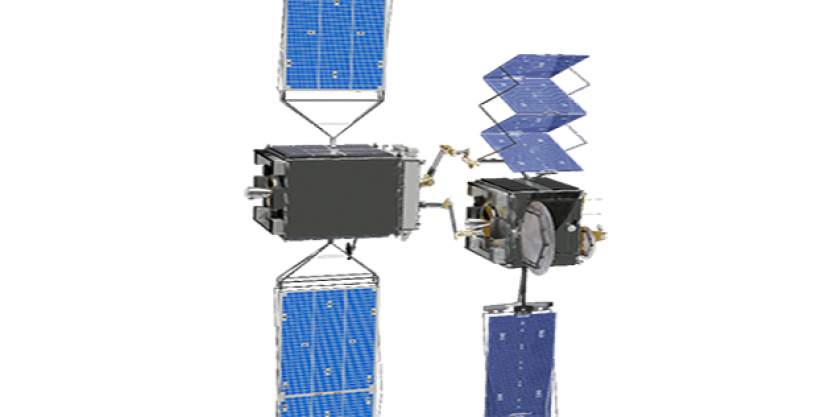
DARPA has entered an agreement with Space Logistics to jointly advance the Robotic Servicing of Geosynchronous Satellites program
Mar 4, 2020
DARPA has established a new partnership with U.S. industry to jointly develop and deploy advanced robotic capabilities in space. The agency has signed an Other Transactions for Prototypes agreement with Space Logistics, LLC, a wholly-owned subsidiary of Northrop Grumman Corporation, as its commercial partner for the Robotic Servicing of Geosynchronous Satellites (RSGS) program.
The RSGS program’s objective is to create a dexterous robotic operational capability in geosynchronous orbit that can extend satellite life spans, enhance resilience, and improve reliability for current U.S. space infrastructure. The first step is the RSGS program’s development of a dexterous robotic servicer, which a commercial enterprise will then operate.
“DARPA remains committed to a commercial partnership for the execution of the RSGS mission,” said Dr. Michael Leahy, director of DARPA’s Tactical Technology Office. “Building upon the successes of the DARPA Orbital Express mission and the recent successful docking of Space Logistics’ Mission Extension Vehicle-1, the agency seeks to bring dexterous on-orbit servicing to spacecraft in geosynchronous orbit (GEO), and to establish that inspection, repair, life extension, and improvement of our valuable GEO assets can be made possible and even routine.”
DARPA funds the U.S. Naval Research Laboratory (NRL) to integrate the flight robotic payload elements, including the robotic manipulator arms, a variety of interchangeable tools, cameras and sensors, and the software and avionics to operate the payload elements. The NRL has more than 15 years’ experience in space robotics, focusing on control algorithms, system architectures, and robot laboratory testing facilities.
“The RSGS program has made steady progress since initiation in 2016. The completion of the Payload Critical Design Review in summer 2019 and the delivery of key fight hardware items such as the first manipulator arm keeps us on course for launch, targeted in 2023,” said Joseph Parrish, program manager for RSGS in DARPA’s Tactical Technology Office. “RSGS would be the first concrete step toward a transformed space architecture with revolutionary capabilities.”
DARPA’s selection of Space Logistics allows the RSGS mission to proceed to spacecraft development, launch, and orbital operations. Under the agreement, DARPA will provide the first-of-its-kind dexterous robotic payload. Space Logistics will provide the spacecraft bus based upon technologies from its Mission Extension Vehicle line, integrate the resulting robotic servicing spacecraft with the launch vehicle and provide the launch, as well as the mission operations center and staff for the full mission duration. After a checkout and demonstration period, Space Logistics will offer commercial servicing to both government and commercial client spacecraft. DARPA and Space Logistics will implement the agreement in two phases. The first is a six-month period to assess the joint program interfaces and business case, and the second is the execution of the flight program through launch and operations.
Image Caption: Artist’s concept of the RSGS system as it resolves a solar array deployment problem on a client spacecraft in geosynchronous orbit. Click on image below for high-resolution.
